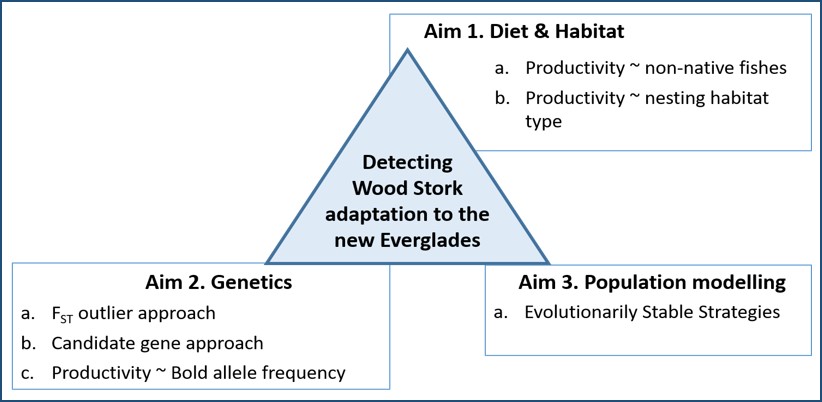
Urbanization and development, climate change, pollution, the spread of invasive species, and sea level rise are unprecedented challenges that have led to 25% of avian species worldwide to face an elevated risk of extinction. In the United States (US), 101 of the 349 reported avian species are formally classified as Threatened or Endangered. Though the Endangered Species Act (ESA) mandates protection for listed species against direct take and degradation of core habitat areas, most species stay on the list for decades as the primary stressors remain unresolved. One listed wading bird, the Wood Stork (Mycteria americana), provides a rare case where biologists have observed potential adaption to highly modified habitat. Shifts in the long-term diet of Wood Storks combined with range expansion beyond its historical geographic bounds contributed to population increases required to down-list Wood Storks from Endangered to Threatened. What remains unknown is whether this recovery is sustainable, especially in light of predicted sea level rise and urban development plans in South Florida, the historic epicenter of the species’ US range. The purpose of this study is to re-evaluate the risk of extinction of the Wood Stork in the US, accounting for potential adaptation in the context of planned and predicted changes to the South Florida landscape. This study could serve as a framework for proactively incorporating evolutionary potential in the framework of ESA recovery in other species which have a high adaptive capacity.
